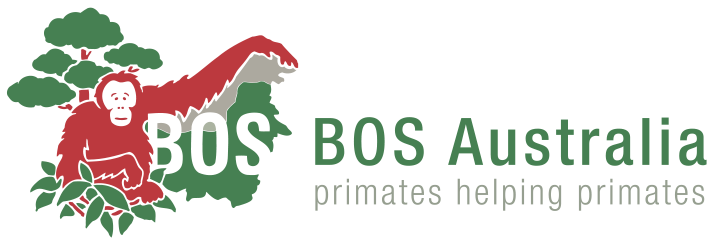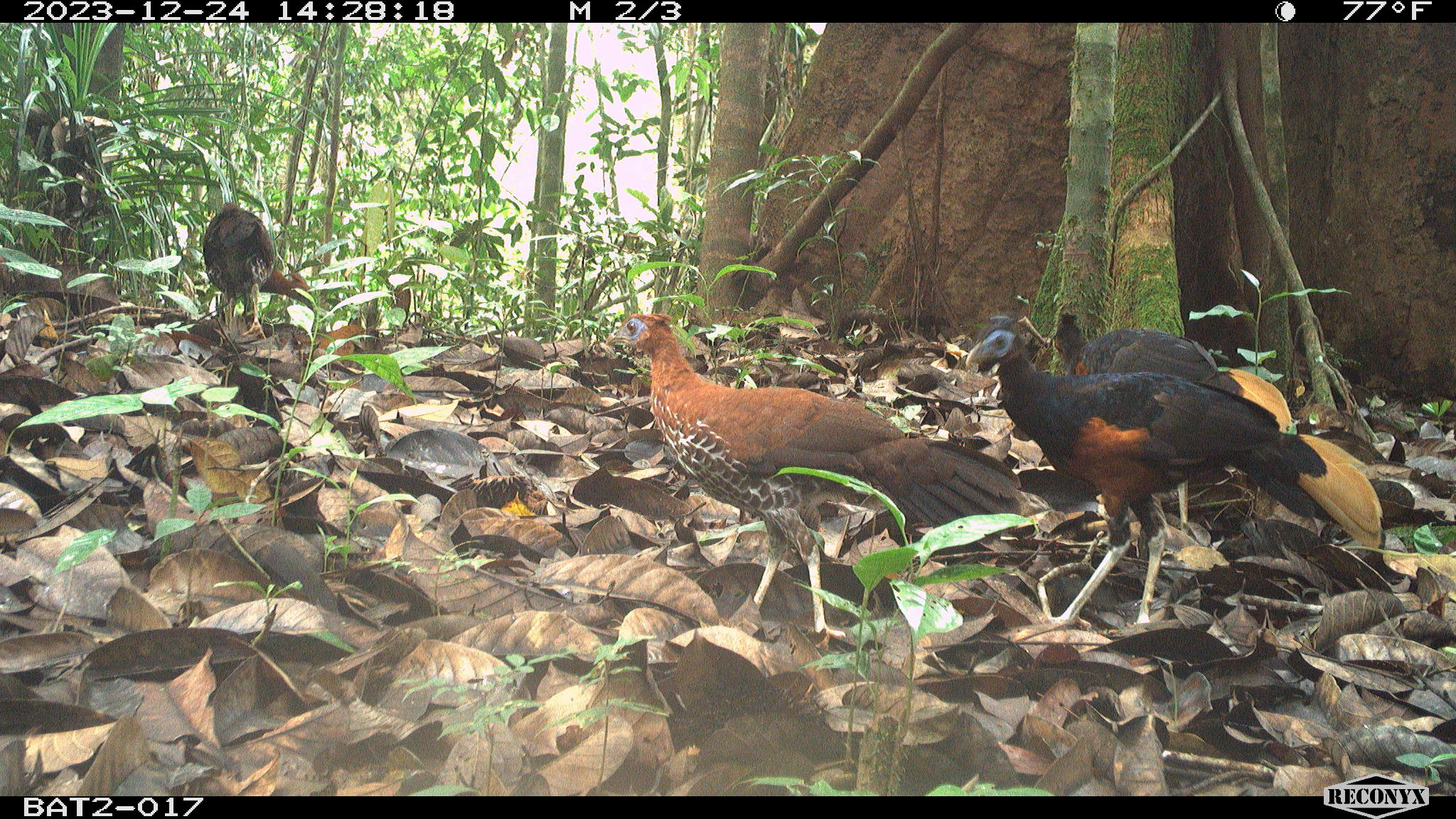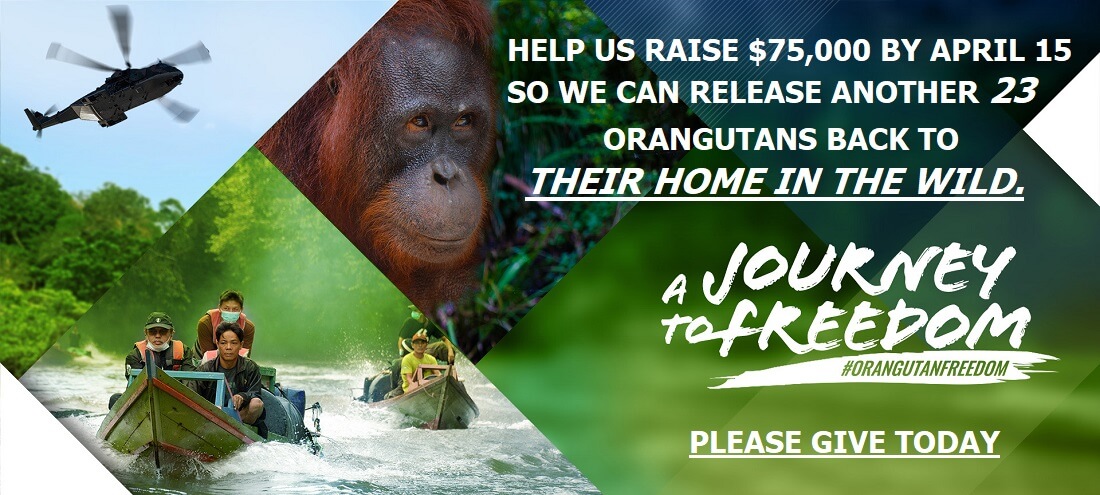SNAPS FROM TRAPS

Since 2020, the BOS Foundation has worked with the University of British Columbia (UBC) in Canada and the Bogor Agricultural University to install camera traps in the Bukit Batikap Protected Forest.
Although they are called camera traps, these devices are completely harmless. They serve as a non-invasive tool for conserving and monitoring wildlife, including orangutans, for periods of 30 to 60 days in remote and hard-to-reach areas without the need for human presence. These cameras can gather valuable information about animals, such as their existence, behaviour, life cycles, and patterns of interaction.
Equipped with infrared sensors, camera traps can detect movement and automatically capture images of passing animals, allowing researchers to document a wide range of behaviours without disrupting the animals’ natural routines.
- Besides orangutans the cameras record…
- … rare species like the Bornean crested fireback.
The researchers strategically positioned cameras at 30 locations throughout the Bukit Batikap Protected Forest. These cameras are placed along pre-existing trails at several key sites, roughly 500 to 1,000 meters apart. This arrangement covers the majority of the forest interior, which is challenging to access on a regular basis.
Since rehabilitated orangutans tend to be more curious than their wild counterparts and will most likely discover the cameras, the traps are housed in lockable boxes. Data is collected monthly by swapping out the SD cards, while batteries are changed every two months. The images captured on the SD cards are then downloaded, saved to hard drives, and regularly emailed from the field to the team at Nyaru Menteng and our collaborators at UBC.
While the primary goal is to monitor orangutans, the cameras have recorded many wildlife species. These include sun bears (Helarctos malayanus), pangolins (Pholidota), barking deer (Muntjacus spp.), and the rare Bornean crested fireback (Lophura ignita), whose presence is now known to be extremely scarce. This information is invaluable for the BOS Foundation and its partners, as it helps them monitor wildlife population health and assess the effectiveness of their habitat protection efforts.
Photos: ©University of British Columbia/Bogor Agricultural University







